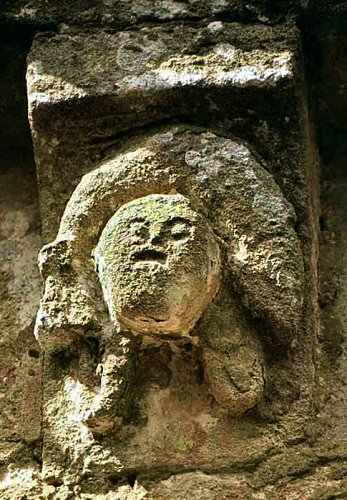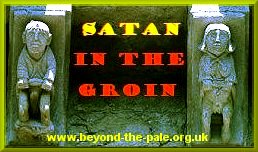Castle of Doon (Offaly)
One of several set-sideways quoin carvings (see also Kiltinane
Church and Tullavin Castle)
which may have been influenced by figures of devils, tempters and sinners,
also set sideways, on the friezes
which accompanied the corbel-tables of some English and French Romanesque
churches.
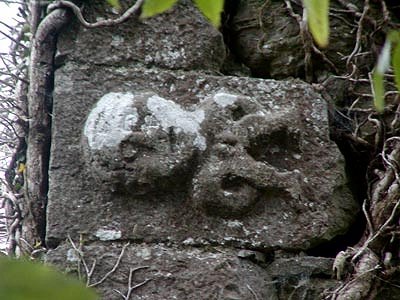
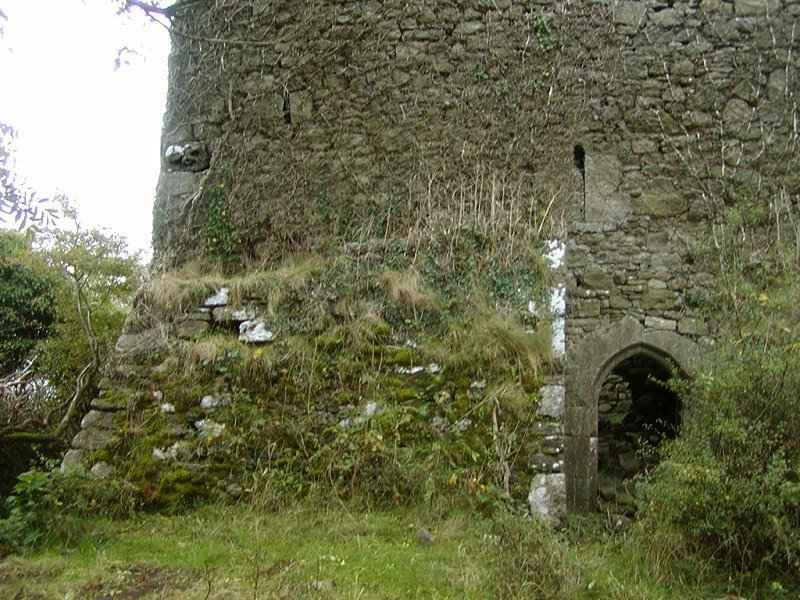
Compare the friezes at Villers-Saint-Paul (Oise)...
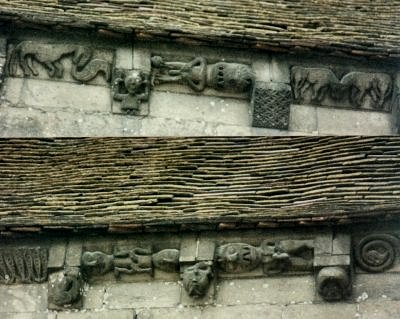
...and Etton near Beverley, East Yorkshire.
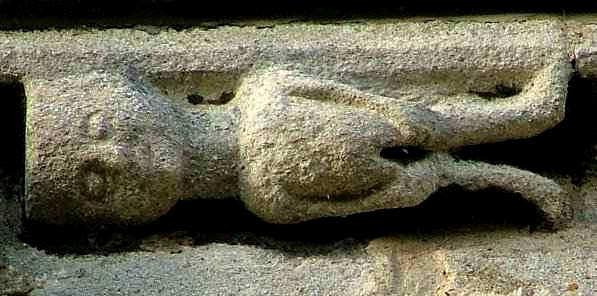
The crudeness of many Irish exhibitionists was also a feature in many rustic
Romanesque churches,
such as this characteristic fish-carrier at Beautiran (Gironde).
The fish, though the livelihood of many families in coastal Aquitaine, probably
represents
the weight of carnal sin, echoing the Roman phallic symbolism of fish.
(When, however, a man with a large fish occurs on a capital, it is
more likely to be Tobias and the Great Fish,
from the Apocryphal Book of Tobit. It may be that the capitals with Tobit
were intended to
ingratiate the fishermen, just as men carrying rams in the churches of Auvergne
were obviously
intended to resonate with their viewers. Rams on corbels symbolise lechery
and concupiscence.)
The face of this figure resembles that of several insular exhibitionists, including the one at Doon.
